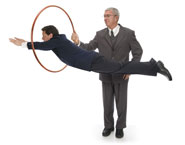When trying to consider what makes the perfect customer experience there are three key elements I use. The first is helpfulness; are they really prepared to help me? The second is value for time; do they respect and make efficient use of my time? And third is customer recognition; when I contact them do they acknowledge me as an individual?
Typically when businesses try to predict customer loyalty they look at customer satisfaction, which is actually a poor measure of customer loyalty. They use statistics garnered from metrics such as Net Promoter Score. However, just because we are a satisfied customer does not mean we will go back and spend again.
A great measure of customer loyalty is the Customer Effort Score research, which has come out of Harvard and measures the predictive power for re-purchasing and the predictive power of increased spending. Customer Effort Score outperforms Net Promoter Score and Customer Satisfaction (CSAT) in predicting repurchasing and has highlighted that it is increasingly important for businesses to make it easy to be a customer.
The Customer Effort Score has got a lot of airplay – claiming to be the only Customer Service Metric that you would need.
In this article Guy Fielding looks at these claims, and finds that although Customer Effort is a good supporting indicator, it cannot be used as the primary Customer Service Metric.
In summer 2010, when Dixon, Freeman and Toman published their HBR paper “Stop trying to delight your customers” they not only offered hard pressed customer service people a tantalising hint of a less demanding service standard.








